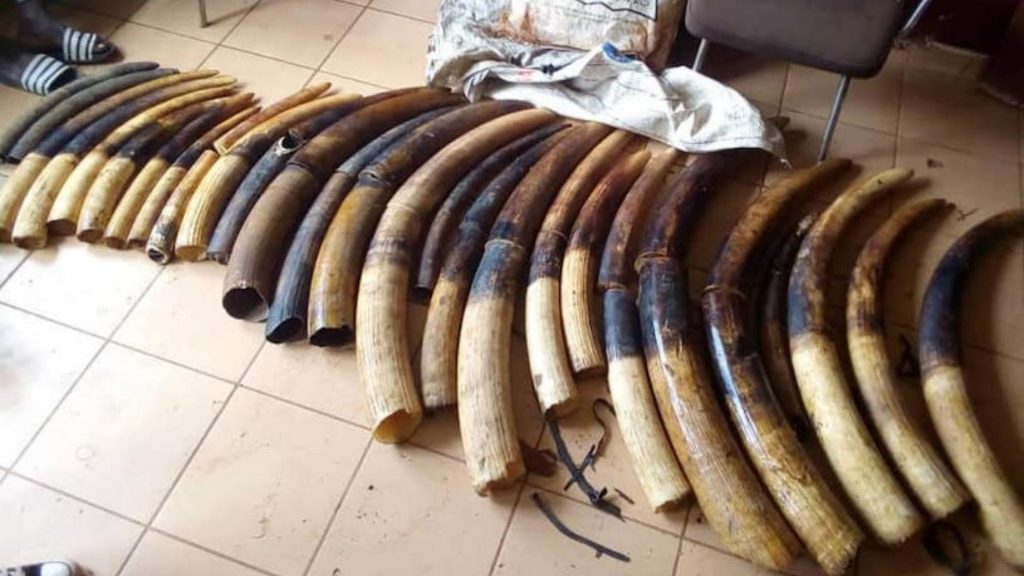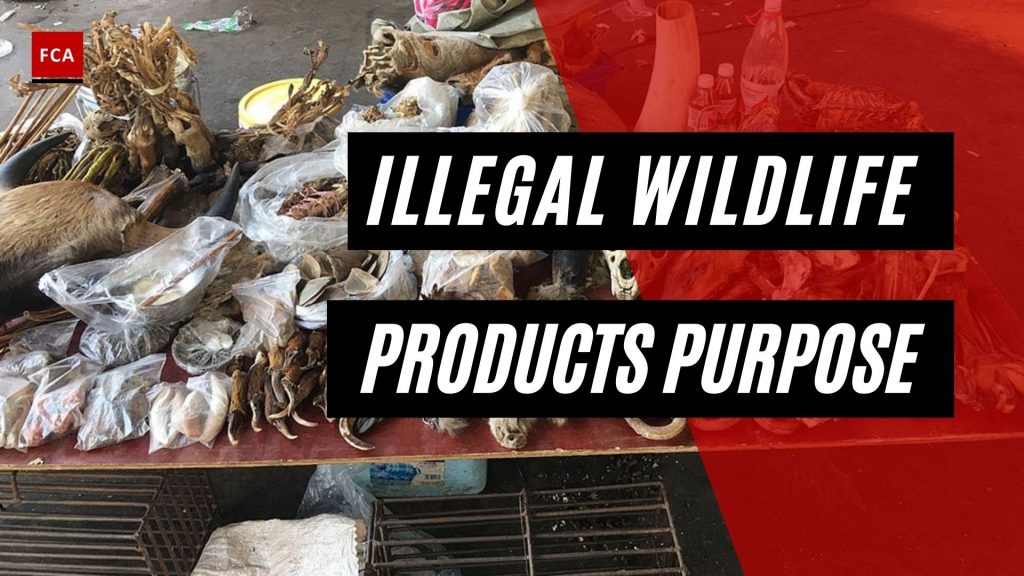The illegal wildlife products. The use of illegally traded wildlife and wildlife products is oftentimes related to traditional practices or ancient history. There are six predominant use cases for illegally traded wildlife and wildlife products, including traditional Chinese medicine, domestication, status, religion, consumption, and other forms of medical practices.

Illegal Wildlife Products And Trade
Poachers, traffickers, and highly organized criminal syndicates are ruthlessly pursuing profit at any cost to meet consumer demand in the illegal wildlife trade, which is destroying wildlife species all over the world.
The illegal trafficking and trade in wildlife commodities such as elephant ivory, rhino horn, pangolin scales, tiger bone, bear bile, and rosewood is causing unprecedented declines in some of the world’s most charismatic, as well as some lesser-known, wildlife species. We’re on the front lines, working to identify, prevent, and prosecute illegal wildlife trade at every opportunity.
Traditional Chinese Medicine
One of the biggest use cases for illegally traded wildlife and wildlife products is related to the so-called traditional Chinese medicine, oftentimes abbreviated TCM.
Traditional Chinese medicine is an ancient healthcare practice that has been around for ages. It evolved from the literature of ancient healers who began documenting their observations of the body, its functioning, and its reactions to different treatments such as herbal remedies, acupuncture, and massage. However, traditional Chinese medicine has been described as “fraught with pseudoscience”, and the majority of its treatments as having no logical mechanism of action, according to the Central European Journal of Medicine.
Despite all scientific evidence, illegally traded wildlife and wildlife products have been and still are used in the traditional Chinese medicine.
For example, the pangolin’s scales are said to have magical healing powers in the traditional Chinese medicine. Skin disorders, rheumatism, and coronary heart disease are all treated with its powder. Pangolin blood is in high demand since it is thought that drinking it will make men more masculine. Women that pregnant, on the other hand, eat powdered pangolin scales to ensure that their newborns get enough milk.
Another example includes the Pythonidae, commonly known as pythons. Bile from the gall bladder of phyton is used for treating many diseases like gum bleeding, high fever, hemorrhoid, skin infections, whooping cough, and rheumatic pain.

Domestication
Another common use case for illegally traded animals is domestication. Every year, millions of exotic animals are taken from their natural habitats to be kept as pets in people’s homes. In this sense, the term “exotic” usually refers to a wild animal or an animal that is more unusual than more common pets, including dogs, cats, or rabbits.
Many animals are captured illegally from the wild to meet the demand for exotic pets – Even though over 30% of species that are traded for domestication are facing the threat of extinction. Rare parrots, some of which face extinction, are among the most commonly kept exotic pets. Similarly, the valuable and vulnerable Cheetah is among the more common exotic pets. It is estimated that around 300 cheetah cubs are trafficked from Africa to the Arabian Peninsula each year to meet market demand.
Status
For centuries, some wildlife products have been a symbol of status in many countries around the world. Most recently, acquiring certain wildlife products for status is popular in some Asian and African countries. Wildlife products are commonly turned into décor items, jewelry, or pieces of art. Craftsmanship serves as a vehicle for the valuable wildlife products to be displayed prominently.
Wildlife products that are best suited for this purpose usually have two key characteristics: they are traditionally regarded as valuable, and their supply is inherently limited. To put this another way, some wildlife products have prestige because obtaining them is difficult and illegal, thus requiring money and connections.
Ivory is the most famous example of a scarce resource of this type. Ivory has long been recognized as an asset, a medium for the exchange of value, and a material for creating high art. With dwindling elephant populations and tightening market restrictions, ivory’s exclusive status and value have risen even more.

Religion
A less common yet present use for wildlife products includes religious practices and traditions. Religious practices firmly ingrained in local traditions and culture occasionally use wild-sourced animals and plants. For example, oud or agarwood plays a significant role in religious ceremonies. In addition, Asian big cat skins were widely used to embellish cultural Tibetan costumes named “CHUPA”. For quite some time, this was thought to be a major driving force behind the poaching of leopards, tigers, and otters in India and Nepal for their skin. Following religious leaders’ appeals, the use of Asian big cat skins for that purpose has decreased significantly since 2006, demonstrating a successful culturally tailored demand reduction strategy.
Consumption
Wildlife may also be illegally traded for consumption. Bushmeat, for example, is the meat of wild or exotic animals that is meant for consumption. In fact, consumption is among the more relevant threats to wildlife. Residents of Central Africa consume approximately 1.1 million tons of bushmeat annually, and refugee camps, mining, and logging camps add to the demand for bushmeat in Central Africa. Other animals captured and killed for consumption include bats, monkeys, snakes, rats, and others. Bushmeat is also an important source of income for some communities.
Bushmeat can be a source of spreading zoonotic disease to hunters and consumers. Zoonotic diseases are those diseases that can be transmitted from animals to humans. Fruit bats were thought to be the cause of the Ebola epidemic, which killed approximately 11,000 people in western Africa between 2014 and 2016.
Other Forms of Medical Practices
In addition to traditional Chinese medicine, there are other pseudo-medical traditions in different areas of the world, including Africa and Asia.
For example, in some African countries, the Rhino horn has been traditionally used for treating fever, infections, and many other diseases. More recently, the belief that rhino horn can be used to treat other ailments, such as alcoholism and cancer, appears to have increased demand.
Rhino horn is also widely used in Viet Nam as a sexual enhancement, impotence cure, gift, and in so-called “face consumption” practices, as well as a party drug. Rhino horns are often bought from antique shops and ground up to be used in the production of medicine. There is little evidence that rhino horn has either medicinal or any other effects as it is made of keratin – the same material as hair and fingernails.
In addition, lion and tiger bones have been used for centuries in China, Japan, Korea, and Vietnam to treat rheumatism and a variety of other muscle and bone ailments. Tiger bone is traditionally soaked, then dried, ground into powder, and then mixed with other ingredients in prescribed combinations by pharmacists and physicians. It has become increasingly common to manufacture tiger bone-based medicines in factories since the middle of the 20th century as part of a wider modernization of traditional medicine manufacturing.
China alone had more than two hundred companies producing tiger bone medicines by the early 1990s. According to estimates, the use in this period ranged from 1,000 to 3,000 kilograms per year due to the rapid growth of this industry. There is a rich and diverse tradition of using parts and products of tigers and lions in Asia.

Final Thoughts
Hundreds of millions of plants and animals are captured or harvested from the wild each year and sold as food, pets, ornamental plants, leather, tourist curios, and medicine. While much of this trade is legal and does not harm wild populations, an alarmingly large portion is illegal and threatens the survival of many endangered species. Overexploitation is the second-largest direct threat to many species after habitat loss.








